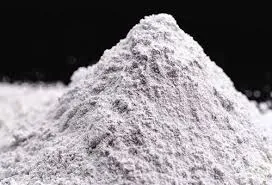
Nov . 11, 2024 00:45 Back to list
Hydroxypropyl Methyl Cellulose Applications and Benefits in Pharmaceutical and Food Industries
Understanding HPMC Hydroxypropyl Methyl Cellulose
Hydroxypropyl Methyl Cellulose (HPMC) is a versatile cellulose derivative that plays a significant role in various industries, including pharmaceuticals, food, cosmetics, and construction. This compound is a white, odorless powder that is soluble in cold water, forming a clear gel-like solution when mixed. Its unique properties make it a preferred choice for many applications, contributing to its growing popularity in recent years.
Chemical Structure and Properties
HPMC is synthesized by the modification of cellulose, a natural polymer derived from plant cell walls. The modification process involves the substitution of hydroxyl groups on the cellulose backbone with hydroxypropyl and methoxy groups. This alteration enhances the solubility and functionality of the cellulose, allowing for a diverse range of applications. The degree of substitution determines HPMC’s properties, including viscosity, texture, and solubility, which can be tailored to meet specific industry needs.
One of the main features of HPMC is its thickening and gelling properties. When dissolved in water, it hydrates and swells to form a viscous solution, making it an excellent thickening agent. This property is particularly useful in the food industry, where HPMC is often used as a stabilizer, emulsifier, and bulking agent. Additionally, HPMC is non-toxic, making it safe for use in consumable products.
Applications in Pharmaceuticals
In the pharmaceutical industry, HPMC serves multiple functions. It is commonly utilized in the formulation of drug delivery systems. HPMC is favored for coating tablets and capsules due to its ability to control the release of active ingredients. The controlled-release characteristics ensure that drugs are released in a manner that maximizes efficacy while minimizing side effects. Furthermore, HPMC is used in the formulation of various topical and transdermal products, as it forms a moisture-retentive gel that enhances skin hydration.
Moreover, HPMC is often employed as a binder in tablet formulations. It enhances the mechanical strength of tablets and improves their disintegration properties, ensuring that they can be effectively absorbed by the body. This versatility in pharmaceutical applications underscores its importance in the design of modern drug formulations.
hpmc hydroxypropyl methyl cellulose

Food Industry Utilization
In the food sector, HPMC is used for its emulsifying, stabilizing, and thickening properties. It is found in a variety of products, from dressings and sauces to baked goods and dairy items. HPMC acts as a fat replacer, contributing to the texture and mouthfeel of low-fat products without compromising flavor. Additionally, it helps maintain product stability by preventing separation and enhancing shelf life.
The food industry also appreciates HPMC’s vegetarian and vegan-friendly status, as it serves as a perfect alternative to animal-derived ingredients like gelatin. This attribute makes HPMC an ideal ingredient for a wide array of food products catering to diverse dietary preferences.
Cosmetic Applications
In cosmetics, HPMC is valued for its ability to enhance the texture and stability of formulations. It is commonly found in creams, lotions, and shampoos, where it acts as a thickening agent and emulsifier. Its film-forming capabilities allow it to provide a smooth application and a pleasant sensory experience. Additionally, HPMC is gentle on the skin, making it suitable for sensitive skin formulations.
Conclusion
In conclusion, Hydroxypropyl Methyl Cellulose (HPMC) is a multifaceted compound with significant implications across various industries. Its unique properties, such as thickening, gelling, and binding, make it a crucial ingredient in pharmaceuticals, food products, and cosmetics. As consumer demand for safe and effective ingredients rises, the role of HPMC is expected to grow, making it a vital component in the formulation of innovative products. With ongoing research and development, HPMC will likely continue to find new applications, solidifying its status as an essential ingredient in modern formulations.
-
Versatile Hpmc Uses in Different Industries
NewsJun.19,2025
-
Redispersible Powder's Role in Enhancing Durability of Construction Products
NewsJun.19,2025
-
Hydroxyethyl Cellulose Applications Driving Green Industrial Processes
NewsJun.19,2025
-
Exploring Different Redispersible Polymer Powder
NewsJun.19,2025
-
Choosing the Right Mortar Bonding Agent
NewsJun.19,2025
-
Applications and Significance of China Hpmc in Modern Industries
NewsJun.19,2025







